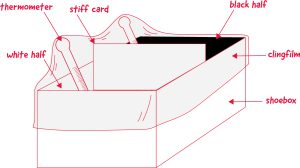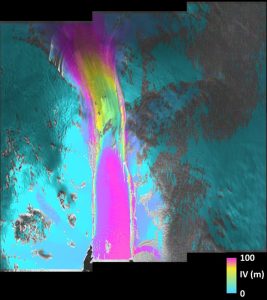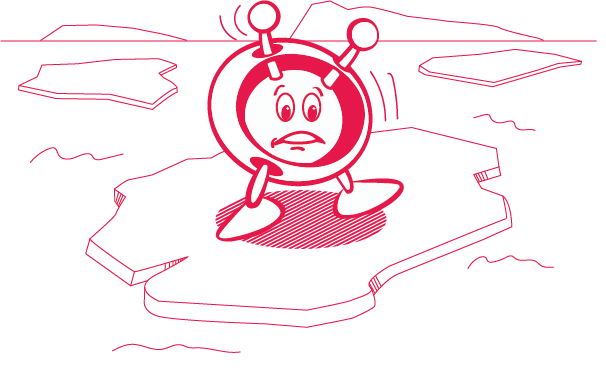The ice is melting – How can we investigate the effects of melting ice?
- To investigate where ice can be found on Earth
- To understand that the amount of ice on Earth is decreasing
- To learn the difference between land ice and sea ice and their effects on rising sea level
- To understand that it is colder on areas of ice (white) than on land and water (dark)
- To strengthen experimental skills
- To work in a group
- To plan an experiment
- To describe and explain physical effects that they see
- 2 small plastic cups
- 2 small plastic plates
- 2 ice cubes
- Enough water to fill the two cups
- Modelling clay


• Shoebox
• One A4 piece of stiff card
• Two A4 pieces of black paper
• Two A4 pieces of white paper
• Glue
• Clingfilm
• 2 thermometers
• Sunlight or bright lamp
Did you know?
A glacier is a huge slowly moving block of ice. ESA Earth Observation satellites, such as Sentinel-1A, can produce useful images of glaciers. These images often look a bit strange because scientists falsely colour them to highlight certain points. Look at the Sentinel-1A image on the right, showing Pine Island glacier in Alaska. The colours show the amount of movement of the ice in 12 days. The blue areas have moved 0 m, whereas the pink areas have moved 100 m. This tells us that the pink area is the moving glacier.

Taking the Pulse of the Planet
Brief description In this set of three activities, students will learn how various types of electromagnetic radiation are used to...
Taking the Pulse of the Planet- Upper secondary
Brief description In this set of three activities, students will learn about how data is collected by sensors and how...
Paxi on the ISS – Natural and artificial satellites
Brief description: Join Paxi aboard the ISS with astronaut Thomas Pesquet to discover natural and artificial satellites. Paxi on the...
Infrared Webcam Hack – Using infrared light to observe the world in a new way
Brief description This set of three activities will enable students to understand the electromagnetic spectrum and observe infrared radiation through...
After the storm – Tracking Hurricane Matthew and analysing its impact
Brief description In this set of two activities, students will explore the applications of Earth observation data in tracking hurricanes...



